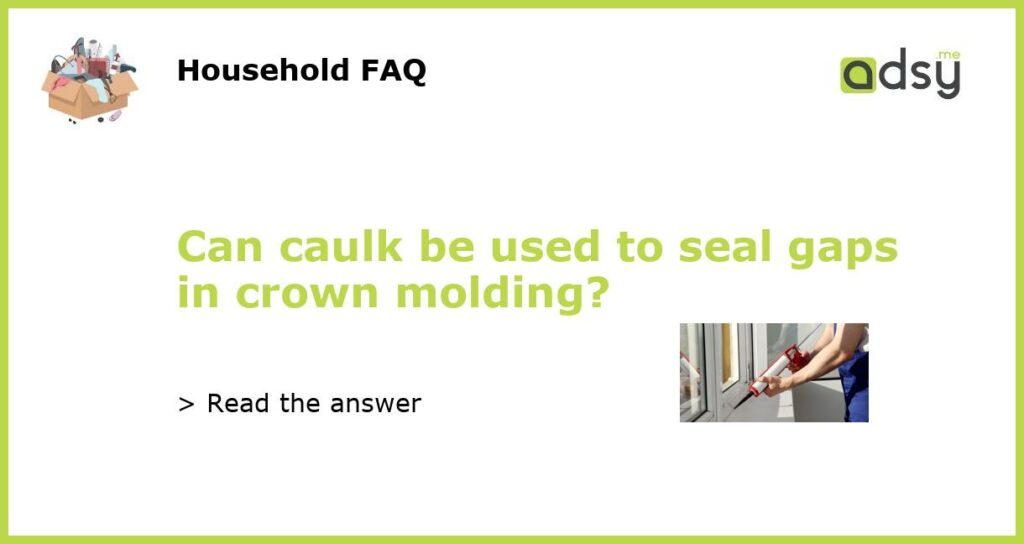Yes, caulk can be used to seal gaps in crown molding
If you have crown molding installed in your home, you may have noticed gaps between the molding and the wall or ceiling. These gaps can be unsightly and can also allow drafts and moisture to enter your home. To address this issue, many homeowners wonder if caulk can be used to seal gaps in crown molding. The answer is yes, caulk can be an effective solution for sealing gaps in crown molding. In this article, we will explore why caulk is a suitable option for sealing these gaps and provide some tips on how to go about it.
Why use caulk for sealing gaps in crown molding?
Caulk is a flexible and durable material that can be used for sealing various types of gaps and cracks. It is commonly used in construction and home improvement projects to fill in gaps between surfaces. When it comes to crown molding, caulk can be an excellent choice for sealing gaps because it can be easily applied and provides a seamless finish.
Furthermore, caulk is an effective sealant for crown molding because it is resistant to moisture and can help prevent drafts from entering your home. This is particularly important if you have crown molding installed near windows or doors where drafts are more likely to occur.
How to seal gaps in crown molding with caulk
Sealing gaps in crown molding with caulk is a relatively straightforward process. Here are some steps to follow:
Prepare the area
Before you begin, make sure to clean the area around the gap in the crown molding. Use a damp cloth to remove any dust or debris that may be present. This will ensure that the caulk adheres properly to the surface.
Choose the right caulk
There are various types of caulk available on the market, so it’s important to choose the right one for your needs. For sealing gaps in crown molding, silicone caulk or paintable latex caulk are generally recommended. Silicone caulk is more flexible and waterproof, while paintable latex caulk can be easily painted over to match the color of the molding.
Apply the caulk
Using a caulking gun, apply a thin and even line of caulk along the gap in the crown molding. Start from one end of the gap and work your way to the other end. Be careful not to apply too much caulk, as this can result in a messy finish. Smooth out the caulk with a wet fingertip or a caulk smoothing tool to create a seamless appearance.
If you are using paintable latex caulk, you can also use a damp cloth to wipe away any excess caulk before it dries. This will help create a smoother finish and make it easier to paint over if desired.
Let the caulk dry
Allow the caulk to dry completely before touching or painting over it. The drying time will depend on the type of caulk you are using, so make sure to read and follow the manufacturer’s instructions.
Finish and paint if desired
Once the caulk has dried, you can evaluate the appearance and decide if any further touch-ups are needed. If necessary, you can apply additional caulk or use a putty knife to smooth out any uneven areas. If desired, you can also paint over the caulk to match the color of the crown molding. Be sure to use a paint that is suitable for the material of the molding.
In conclusion, caulk can indeed be used to seal gaps in crown molding. It is a flexible and durable material that can provide a seamless finish while helping to prevent drafts and moisture from entering your home. By following the steps outlined above, you can effectively seal gaps in your crown molding and improve the overall appearance and energy efficiency of your home.

